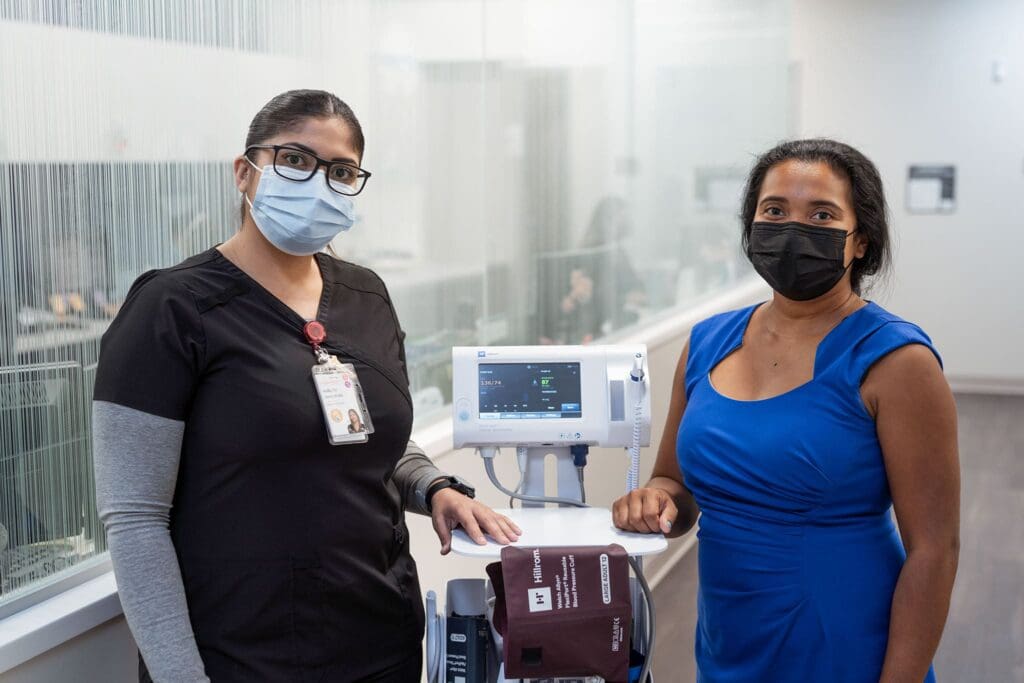
Michelle Hughes, PharmD, Director of Quality and Population Health, shares an overview of Neighborhood’s new Remote Patient Monitoring program and the positive outcomes it will have on patients. Neighborhood remains focused on providing quality and innovative health care solutions, removing barriers on the patient’s journey to being healthy and happy.
Enjoy this short video (1:23) that shows Remote Patient Monitoring technology:
Remote Patient Monitoring (RPM) is technology that allows the monitoring of chronic conditions outside of conventional clinic settings. With the rapid shift to telehealth (phone and video visits) during the COVID-19 pandemic, Neighborhood Healthcare has continued to explore innovative ways to enhance the patient experience and provide more convenient ways to deliver care.
Neighborhood began RPM in 2019 using continuous glucose monitors (CGMs) to monitor sugar levels for patients with diabetes. CGMs are filamented sensors that are inserted under the skin on the back of the arm or abdomen. The CGM measures the sugar level within the interstitial fluid (the fluid that fills the spaces between cells) of the body. That sugar level can then be transmitted electronically to a reader device or cellular phone and data is collected to assist healthcare providers with education or adjusting medications.
CGM offers a more convenient way for a patient to monitor their diabetes without having to prick their finger multiple times a day and allows real-time data to inform how their sugar levels are affected by diet, exercise, and medicines.
Most recently, Neighborhood signed a contract with AT&T/VitalTech that will supply over 5,000 patients with access to a cellular-enabled tablet and health monitoring app that will pair to blue-tooth enabled blood pressure monitors, oximeters, glucose meters and weight scales. By providing both the cellular connection and blue-tooth devices, Neighborhood is helping to overcome the digital divide that often prevents low socioeconomic populations from accessing more advanced technology that can improve health outcomes.
